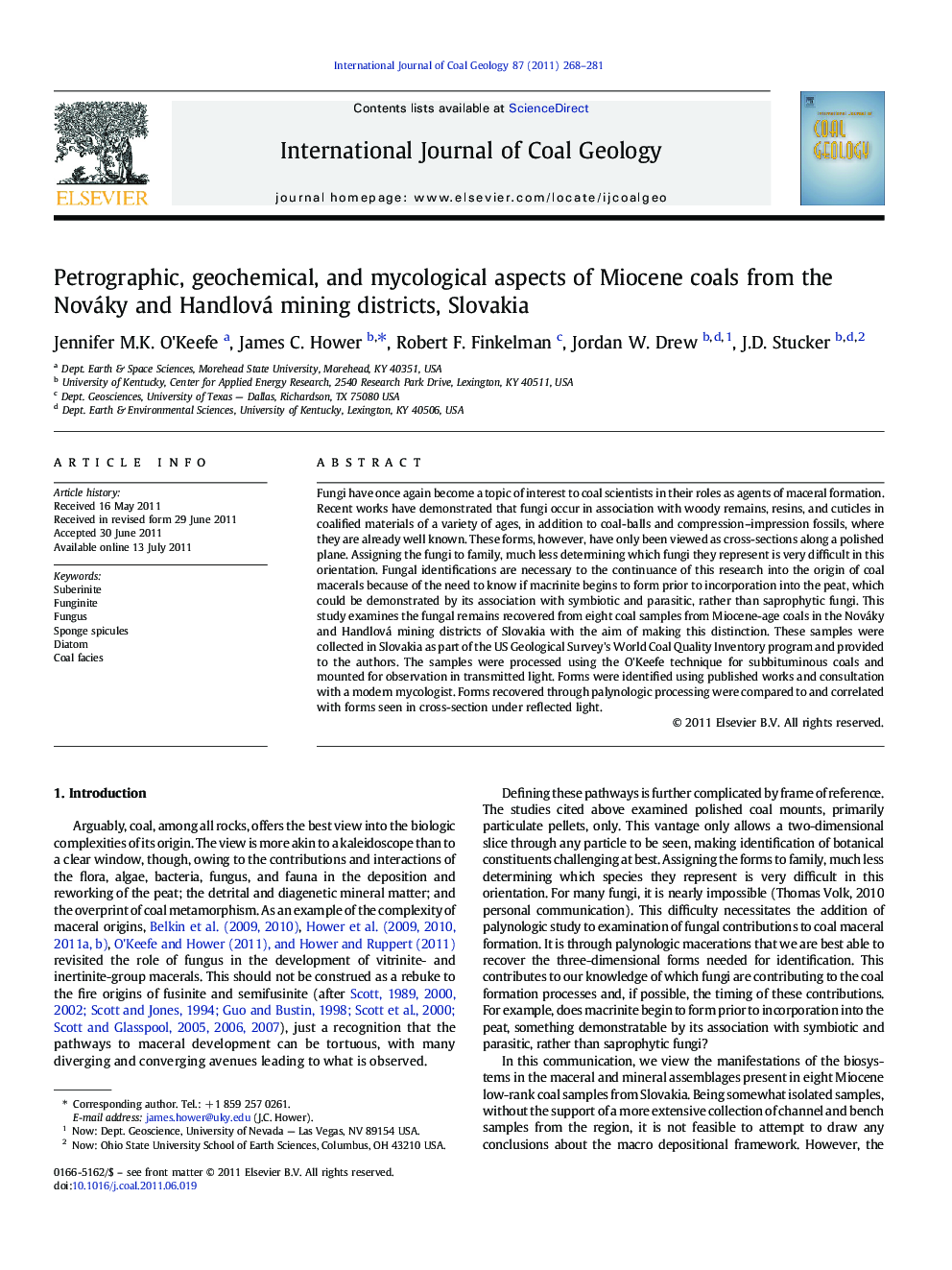| Article ID | Journal | Published Year | Pages | File Type |
|---|---|---|---|---|
| 1753566 | International Journal of Coal Geology | 2011 | 14 Pages |
Fungi have once again become a topic of interest to coal scientists in their roles as agents of maceral formation. Recent works have demonstrated that fungi occur in association with woody remains, resins, and cuticles in coalified materials of a variety of ages, in addition to coal-balls and compression–impression fossils, where they are already well known. These forms, however, have only been viewed as cross-sections along a polished plane. Assigning the fungi to family, much less determining which fungi they represent is very difficult in this orientation. Fungal identifications are necessary to the continuance of this research into the origin of coal macerals because of the need to know if macrinite begins to form prior to incorporation into the peat, which could be demonstrated by its association with symbiotic and parasitic, rather than saprophytic fungi. This study examines the fungal remains recovered from eight coal samples from Miocene-age coals in the Nováky and Handlová mining districts of Slovakia with the aim of making this distinction. These samples were collected in Slovakia as part of the US Geological Survey's World Coal Quality Inventory program and provided to the authors. The samples were processed using the O'Keefe technique for subbituminous coals and mounted for observation in transmitted light. Forms were identified using published works and consultation with a modern mycologist. Forms recovered through palynologic processing were compared to and correlated with forms seen in cross-section under reflected light.
► Petrology, chemistry, and fungal palynology of Slovakian Miocene coals was studied. ► The influence of fungus may be more widespread than just the recognized macerals. ► Funginite is associated with degraded macerals.
